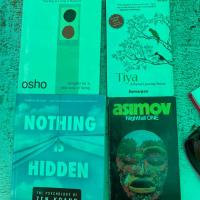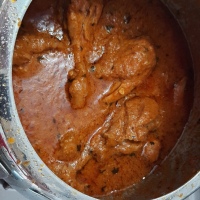Contact Us
KGH @ AOL.IN M.91-9828284433 T.91-141-2363262Top Posts
Top Clicks
- None
 This Jaipur
This JaipurRecent Comments
LIKE!
Archives
- Drumsticks in Butter Chicken Gravy
- Jaipur Book Lovers Is 100
- For Them Book Is The Star
- Jaipur Book Lovers
- Life On The Banks Of The Chambal
- On The Banks Of the Chambal-An Album
- Boneless Chicken In Shahi Gravy
- Chicken tomato masala
- A home for the butterflies in Jaipur
- Chicken Masala In An Oven
- How To Use The Leftover Roties?
- How To Cook ‘Kaleji’
- CHICKEN LOVER’S RECIPE EXCHANGE
- KEOLADEO NATIONAL PARK,BHARATPUR IN IMAGES-3
- KEOLADEO NATIONAL PARK,BHARATPUR IN IMAGES-2
- KEOLADEO NATIONAL PARK,BHARATPUR IN IMAGES
- Some Images From The Pushkar Fair 2013
- An Encounter With The Naga King Chillies
- A Visit To KCK Simriti Ban
- A Walk At The Man Sagar Lake
- My Version Of Masala Papad Recipe
- How To Make A Simple Tomatoe Cheese Sandwich
- How To Grill a Perfect Cheese Vegetable Sandwich
- Photos From A Day At Mehrangarh Fort
- Do you take a camera with you on your holiday?
- A Gourmand’s Jaipur
- Times Food Guide-First Jaipur Edition-2012
- The Rake
- Picture Gallery
- JEWELS IN THE CROWN OF JAIPUR
- Guldaudi Is All Set To Bloom Again!
- Musical Fountain At The Jawahar Circle, Jaipur
- National Flag Of India In Jaipur
- Unique Restaurants Of Jaipur
- A Recipe To Cook Raan At Home
- Why Love Jaipur?
- Elephants Are The National Heritage Animals Of India
- Revamped Official Website Of Karan’s Guesthouse
- A To Do List For When You Are In Jaipur
- The Flowers Are Back!
- What’s Cool In This Heat?
- Paneer Masala
- Viratnagar
- Science Park
- JKK Gifts Jaipur With A Rajasthani Museum
- Do Press The Like Button!
- The Salt Lake of Sambhar
- Shaktipeeth-Kaila Devi
- The Jantar Mantar In New Delhi
- To Sariska-By Road-An Album
- Mandana
- Jaldhara
- A Visit To Kaila Devi Mela
- Gangaur
- Radio, TV & FM In Jaipur
- Got To Have Gota!
- What Is A ‘Kos Minar’?
- Sevanti-A Reprise
- The Hot Air Balloon Ride On The 13th March 2011
- An Evening At The Jal Mahal Palace
- Bored In Jaipur?
- Whats Free In Jaipur?
- Chicken Curry
- A Recipe To Cook ‘Khichari’
- Photos Of Some Common Birds Found In The Parks & Gardens Of Jaipur.
- A Labour of Love!
- PANORAMAS
- G.I. For Sanganeri Hand Block Prints
- Show Us The Trees In Your Garden!
- The Jaipur Cyber Dens
- Some Photos Worth Another Look!
- Best Jaipur Hangouts
- Why Kill A Tree Like This?
- What Noise?
- Why Do We Need Piped LPG?
- Why Burn Dry Leaves?
- An Appeal
- Basant
- Hand Made Paper
- Beautification Of The Streets Of Jaipur
- Jaipur Blue
- Photographing Monuments Of Jaipur
- Spicy Egg Curry
- Makar Sakranti
- This Jaipur-At A Glance
- The Bullet Riders
- Rangeela Omelette
- Recipes
- Open Air Theatres in Jaipur
- The Smoking Lounges of Jaipur
- A Shoe Laundry In Jaipur?
- Some Flower And Plant Nurseries In Jaipur
- Soya Chunks In Manchurian Sauce
- Day Break At The Man sagar
- A Flower For Your Desktop
- A Day At The Pushkar Fair 2009
- A Recipe To Cook Lentils
- Deepawali Chali Gai
- Jaigarh
- Cannon Foundry Of Jaigarh
- 13th Birding Fair at Jaipur’s Man Sagar Lake to Promote ‘River Restoration’
- Jaipur on Slideshare.net
- Some Important Libraries Of Jaipur
- Ground Water Level in Jaipur
- Thikana Govind Dev Ji
- The Monsoon Ride To Bhangarh
- Local Perfumes Of Jaipur
- A Deer Park In Jaipur
- All In Praise Of Trees
- Jantar Mantar
- Laal Maans-Prepared My Way
- Places To Visit Near Jaipur-A list
- Isar Lat
- A Traveler’s Resource Known As The Travelgrove.com
- Vipassana
- Global Cook Book-1
- Horn Please!
- A Gift Of Wings
- Call 108 Emergency
- A Birding Fair in Jaipur
- Jaipuri Razai-A Quilt Like None Other
- Ravindra Manch And Jawahar Kala Kendra
- A Village For The Elephants Of Amber
- In Remembrance
- An Animal Fair With A Difference
- ‘Khama Ghani Ajmal ji Ra Kanwara’
- Pabu ji
- Grace in Gait-The Thar Marwari Horse
- Kota Doria Sarees
- Chocolates-A Life Long Affair
- Lac-Worth Its Weight In Gold
- A Quick Bite To Eat In Jaipur-2
- Pachar-The Desert Citadel
- A Quick Bite To Eat In Jaipur
- Bal Vipra Bankura Hanuman Ji Mandir,Baleta
- A Rajasthani Delicacy-Ker Sangri Pickle
- In And Around Bhandarej-A Sketch
- Air Planes For All ?
- PRASANNAM Diabetic Foot Clinic,Jaipur
- Coffee Bars of Jaipur-A List
- Master Masons Of Sikandra
- Lalsot-Some Interesting Facts
- Braille Library Of Jaipur
- It Is A Dog’s Holiday
- Morning Walk In Jaipur
- Pushkar Fair
- A Rajasthani Curry Made With Aloe Vera
- Marriages May Be Made In Heaven But Are Solemnised In Jaipur
- SHRI SALASAR BALAJI
- SHRI KHATU SHYAM JI
- JAIPUR GETS A NEW ART GALLERY
- How Do You Like Your Chai-Tea?
- CAMEL-THE SHIP OF DESERT
- Ramakrishna Mission
- Mehndipur Balaji
- Bhangarh
- Abhaneri
- Jaipur Life
- Peacock-The National Bird Of India
- Jaipur Museums-A List
- Gardens Around Jaipur
- Bird Watching In Jaipur
- Books About Jaipur You Should Read
- A Fish Curry Recipe From Jaipur,INDIA
- Clubs Of Jaipur
- Where To Shop When In Jaipur
- JAIPUR-A Fun Place-Even By Night
- Karan’s Guest House
This Jaipur
Tweets by karansTop Rated
Subscribe Us
Karan’s Guest House, Jaipur Photo Gallery
Share This Blog
- Karans Guest House in Jaipur has 3 reviews
-
Join 1,529 other subscribers
-
Join 1,529 other subscribers
Pages
Blog Stats
- 301,103 hits
Spam Blocked
No Instagram images were found.
Posts I Like
Follow me on Twitter
My Tweets- Follow This Jaipur! on WordPress.com
Karan’s Guest House On Facebook
- Follow This Jaipur! on WordPress.com
यह जयपुर


























Grace in Gait-The Thar Marwari Horse
In a guest Post Arvind Chawdhary Polo Player,Marwari Horse enthusiast and team leader for The Thar Marwari Horse Safari, Jaipur writes about The Marwari Horse.
As much a mystery as a legend, the Marwari horse instantly evokes reminiscence of the valorous Chetak. The loyal horse of Maharana Pratap of Mewar is alive even today in the annals of history in Rajasthan synonymous for valour, speed and stamina.
The elegant and brave, intelligent and graceful, strong and high in performance, proud and athletic, the horse has been long enshrined in the bardic literature of Medieval Rajasthan. One of the finest horse breeds in the world today, the elegant Marwari comes from an ancient Arab-Turkmeni mix lineage that evolved in the harsh desert climate of the Marwar Region in India.
The horse has since time immemorial had a symbiotic relationship with the desert and the soldiers. The Marwari horse was an awe-inspiring sight on the battlefield with the soldier, who unmindful of the dangers was battling between – victory and death. His resolve helped in no small measure by the confidence he had in his steed – a magnificent horse rearing on its hind legs over the din of clashing swords and warriors’ curses. The Marwari was truly a hero’s horse. Maharana Pratap rode one, the peerless Chetak. Amar Singh Rathore rode Udal and Pabu ji rode Kesar Kalmi . As did most of the heroes whose deeds light up Rajasthan’s embattled history.
By traditional accounts, the Marwari horse has been bred in Rajasthan since at least 1212 C.E. It was originally developed to be a war horse. Bred by the Rathores, the traditional rulers of Marwar, the valiant Rajputs developed a policy of strict selective breeding.
Graceful in his gait the Marwari horses are born with a “rehwal” or “revaal”, a quick, four-beat lateral gait, which is smoother and more comfortable than a trot, used in the desert to cover long distances with greater comfort.
The horse is distinctive with a long head with a broad forehead, wide-set large and alert eyes, a roman nose with full nostrils, and a well-shaped mouth. The most distinctive feature of the Marwari horse is its lyre-shaped ears, which curve inwards and meet at the tips. The ears capable of rotating through an angle of 180 degrees apart from providing the horse with an extremely acute hearing also protect it in sand-storms.The average height of a Marwari Horse is 62-66 inches.And when he leaps, he spans 12 feet!
Apart from their undoubted use in battle, Marwaris were excellent horses for hunting and racing. Albino Marwaris were considered priceless and were used in religious ceremonies. Today, the horse is used for horse riding safaris, endurance competitions, religious ceremonies, and earlier were also in the Cavalry of the Delhi, Punjab and Rajasthan Police.
The horse in recent years, has gained a strong following both inside and outside India. The Marwari horse is capable of adapting almost anywhere. Its undoubted beauty and courageous disposition along with the steadfast loyalty it shows towards its owners is making it very trendy with horse enthusiasts.The Marwari has also raced at The Meerut Race Club in May 2008 for the first time in the Indian racing history of past 129 years.In March 2009 three Marwari horses will be show cased at the EQUITANA-2009 ( a biannual equestrian sports world fair)in Germany for the first time.
THE THAR MARWARI HORSE SAFARI
Rate this:
Share this:
Related